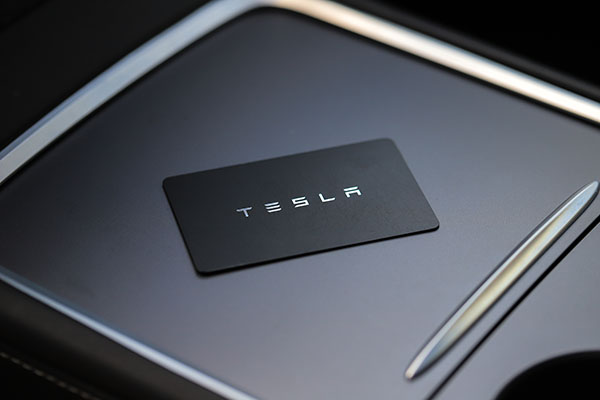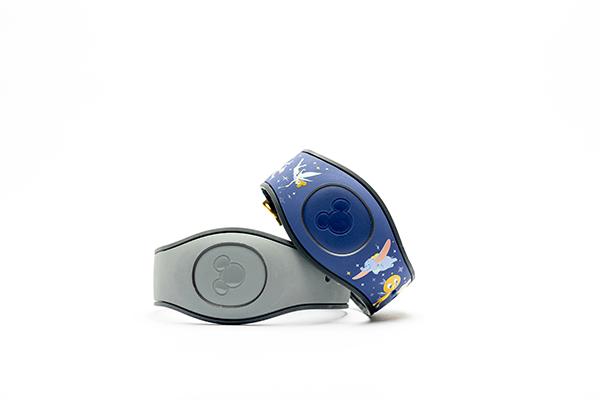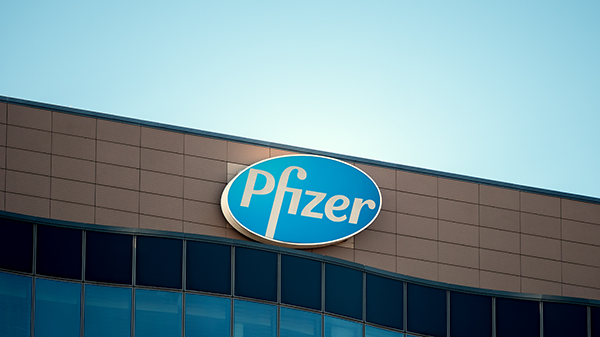The 5 Biggest Companies Using RFID Today
Every business can reap the benefits of RFID, and in this article we are going to look at some of the ways that 5 household names have successfully implemented RFID technology to streamline their business and interact with their customers.

Amazon – “Just Walk Out”
RFID Application: Inventory Management
Type of RFID: UHF RFID
In 2018, Amazon debuted its first “Just Walk Out” technology store and currently, there are over 85 stores that feature this technology. Amazon uses cameras, shelf sensors, sensor fusion, AI technologies, and now in some stores, UHF RFID, to accomplish this ‘magical’ experience.
Amazon started with just cameras, sensor technology, and AI when they launched their Just Walk Out stores, which worked very well with food and beverage retail locations in their NFL stadium locations like Lumen Field and EverBank Stadium. After achieving this success, Amazon opted to broaden its scope to include retail items, such as 'soft goods' like apparel, which are selected through a different shopping approach compared to food and beverages. Because these retail items needed to be on hangers for customers to pick up, feel, and touch – Amazon decided to track these items by using UHF RFID technology.
Amazon chose UHF RFID technology inspired by the success stories of retail giants like Walmart, Lululemon, Zara, and H&M. Incorporating UHF RFID tags into clothing allows retailers to diversify their product offerings while preserving the effortless Just Walk Out experience. Avery Dennison supplied the UHF RFID tags, designed to resemble typical apparel hang tags.
Learn More about Amazon & RFID

Tesla - Smart Key Cards
RFID Application: Access Control
Type of RFID: NFC RFID
In 2015, Tesla introduced an NFC RFID key card designed to unlock and start the Tesla Model X. It’s no surprise that this new feature debuted the year after Apple released the iPhone 6 (2014) which introduced integrated NFC RFID technology - primarily for Apple Pay.
Since Tesla debuted their NFC key cards, there have been significant improvements based on user feedback and technology advancements. Over the past 10 years Tesla has strived to increase security, functionality, and usability for their innovative smart cards. Additionally, they have expanded the NFC card usage to all of their sedan models, including the Tesla Model S, Model 3, Model X, and Model Y. Even though the outside of the Tesla smart card looks like a custom product, the inside chip and coil look similar to some of Avery Dennison’s portfolio of HF/NFC tags.
Learn more about Tesla & RFID
![]()
Walmart - Retail Mandates
RFID Application: Supply Chain Management; Inventory Management
Type of RFID: UHF RFID
Walmart is the biggest retailer in the world, so when they chose to mandate RFID tags on incoming pallets of product in 2006, it triggered a wave of RFID adoption in retail that is still in motion today. While the initial RFID implementation was deployed to create supply chain visibility in a select number of products and stores, Walmart has greatly expanded the use case, products tagged, and stores involved.
Today, Walmart is using RFID to increase visibility into the supply chain as well as individual store product inventory. Walmart’s inventory management initiative is designed to improve inventory accuracy, and ultimately improve the customer experience by providing customers near real-time inventory data. February 2024 marks another significant step forward for Walmart, because they have expanded their RFID tag mandate across all products sold at all U.S. Walmart stores.
Walmart’s decision to mandate RFID and continue expanding that mandate, hasn’t just affected their company, but the entire retail industry. Walmart’s RFID mandate has influenced companies like Target, Macy’s, Zara, Kohl’s, Decathlon, Lululemon, Adidas, Nike, Best Buy, Gap, H&M, Urban Outfitters, Nordstrom, Burberry, Gap Inc, to try RFID technology.
Once Walmart mandated RFID, it and other major retailers saw the need for standardized RFID tags that were tested and proven in retail environments. This need grew when Walmart started tagging more products that varied in material, packaging, and display style - which made standardization more complex with a myriad of requirements.
The Auburn RFID Lab stepped up to the plate by creating mock retail environments, rigorous testing practices, and RFID tag standards, applicable to all retailers implementing RFID technology. Auburn’s RFID Lab created the ARC Program which partners with leading tag manufacturers like Avery Dennison to test individual RFID tags against unique Specs, so that the RFID tags can be approved for specific products/packaging for retail.
Learn more about Walmart & RFID

Disney - MagicBands
RFID Application: Ticketing; Access Control, Purchasing, Costume Inventory Management, & More
Type of RFID: NFC RFID, UHF RFID
Disney is the example of a company that is continually innovating – and this is exactly what they’ve done with RFID technology since they first rolled it out as a pilot program in late 2011. By 2012, Disney had implemented RFID for access control in their on-site hotels while simultaneously introducing tap-to-pay features in park retail locations. Even though both these RFID applications are still used throughout Disney theme parks, the most popular RFID application from Disney’s IT team is Disney’s Magic Bands.
Disney stands as a prime example of a company committed to perpetual innovation, a commitment reflected in their approach to RFID technology since its initial rollout as a pilot program in late 2011. By 2012, Disney had deployed RFID for access control within their on-site hotels, concurrently introducing tap-to-pay functionality in park retail outlets. Although these RFID applications remain integral to Disney theme parks, the hardware and usability received a big upgrade from Disney's IT team with the implementation of Disney's Magic Bands.
Disney’s MagicBands have long-range and short-range RFID capabilities. Within each band are at least three RF components - an integrated NFC RFID chip (13.56 MHz), an integrated UHF RFID chip (860 – 960 MHz), and a 2.4 GHz external radio. MagicBands are used for a variety of different purposes around the park such as unlocking hotel rooms, ticketing to enter the parks, check in at virtual queues and lighting lanes, purchase food and merchandise, and associate park photos.
Learn more about Disney & RFID

Pfizer - Anti-Counterfeiting
RFID Application: Authentication, Supply Chain Management, Inventory Management
Type of RFID: UHF RFID
In 2006, Pfizer, along with Walmart, became one of the early adopters of RFID technology. Pfizer utilized RFID tags on shipments of Viagra to address pharmaceutical counterfeiting. Given the potential hazards of counterfeit pharmaceuticals, Pfizer invested millions in RFID tags for use on individual products, product cases, and product pallets.
When the pandemic hit, Pfizer was able to benefit from RFID technology again when hospitals and pharmaceutical companies partnered with Kit Check.
Kit Check employs RFID technology to efficiently manage COVID vaccine inventory, including tracking by lot number, doses, expiration date, and location. Kit Check played a pivotal role in vaccine storage due to the precise temperature requirements mandated for both the Pfizer and Moderna vaccines.Kit Check partnered with Avery Dennison one year prior to the pandemic in order to integrate RFID into their existing system - making them ready for when vaccine management took center stage.
In both instances of RFID usage, Pfizer pharmaceutical products were not just tracked at the pallet level or case level, but instead, managed at item-level, providing Pfizer and their partners granular visibility.
Learn more about Pfizer & RFID
Conclusion
For more information about these RFID applications, contact us via phone, email, or chat with us in the bottom right hand corner of your screen!
